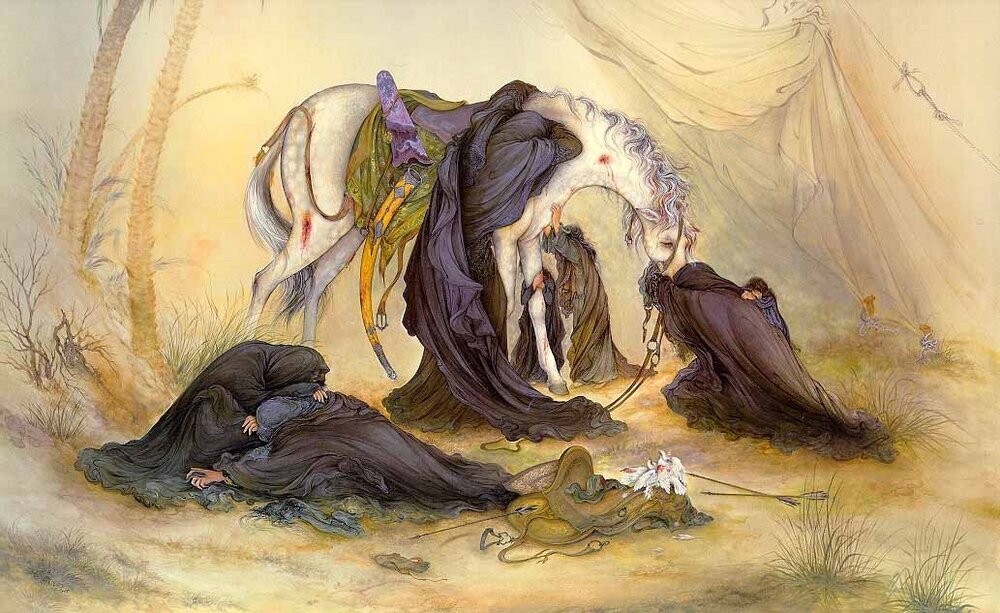Farshchian’s “Evening of Ashura” perfect expression of grief

TEHRAN – Master miniaturist Mahmud Farshchian created “The Evening of Ashura” both to depict one of the greatest tragedies for Muslims and to represent the power of art in expressing major events of history.
The masterpiece portrays the helpless household of Imam Hussein (AS), mourning after his horse returns from the battlefield without him. Their deep grief for their beloved has been depicted perfectly in this Persian miniature painting.
Ashura is the 10th day of Muharram, the day upon which Imam Hussein (AS) and his companions were martyred in Karbala as a result of their valiant stand against the injustices of the oppressive Umayyad dynasty in 680 CE.
The 90-year-old Farshchian once said that he has drawn the painting on Ashura in 1977 while people around the country were mourning during the anniversary of the martyrdom of Imam Hussein (AS) and his loyal companions.
“I stayed at home on that day as a strange feeling was creeping over me,” Farshchian said and added, “My mother gave me a real earful about my staying at home on such an occasion.”
“After hearing my mother’s reprimand, I went into a room, taking a paintbrush, and did the painting without any preplanning.”
Farshchian donated the masterwork to the Astan-e Qods Razavi Museum in the northeastern Iranian city of Mashhad in 1990.
He later also created other works about the tragedy of Ashura. “Ali-Asghar (AS)” and “The Standard-Bearer of Truth” are among the works.
“Ali-Asghar (AS)”, created based on historical documents, depicts Imam Hussein (AS) and his newborn son, Ali Asghar (AS), in his arms shot with an arrow piercing his throat on Ashura.
The Imam’s brother, Abbas ibn Ali (AS), who was the standard-bearer of his division on the battlefield, has been depicted in “The Standard-Bearer of Truth”.
His “Heaven on the Earth” depicting Hazrat Zainab (SA), the sister of Imam Hussein (AS), and a number of angels mourning for the Imam after being martyred at Karbala in 680 CE, was unveiled at the Astan-e Qods Razavi Museum in November 2017.
The museum also holds 12 other paintings by Farshchian, which are on display in a special section dedicated to artworks.
Farshchian was among the 40 Iranian artists honored by the National Library and Archives of Iran for their outstanding works created about the tragedy of Ashura over the past century.
Photo: “Evening of Ashura” by Mahmud Farshchian.
MMS/YAW
